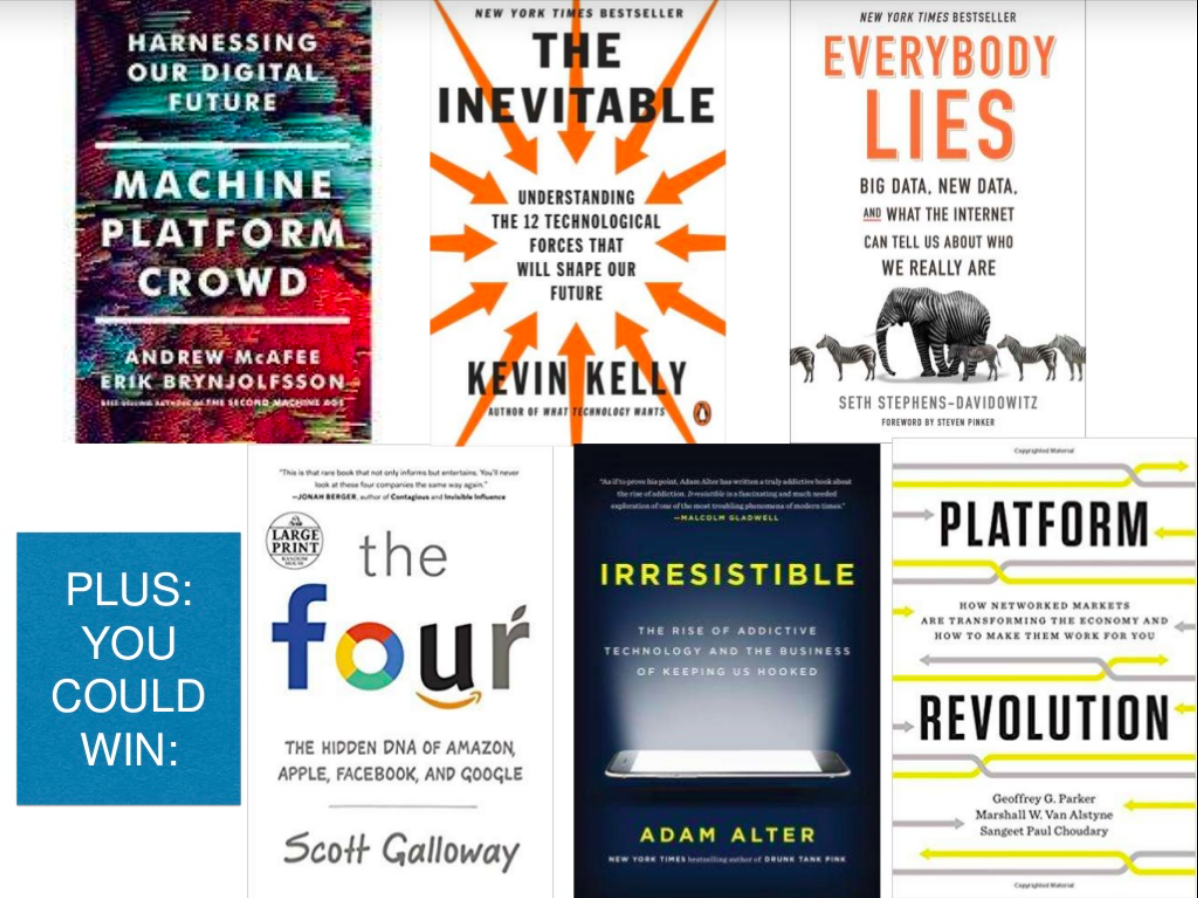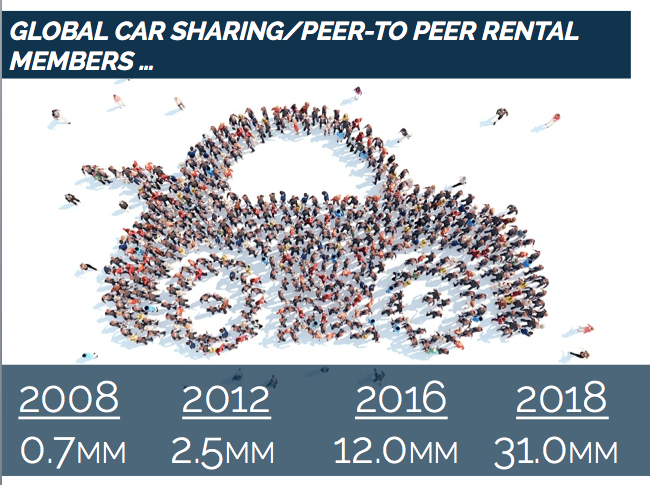
May 18, 2018 | Culture & Leadership, Emerging Trends, Futureproofing & Disruption, New Business Models & Strategies, Social Innovation & Transforming Better Worlds, Startups & Accelerators, Technology & New Media

As a companion study to our customer-facing “Customer Zeitgeist”, we’re asking digital executives, IT leaders, transformationists and strategic people dealing with the connected economy, all about the emerging technologies and the changing digital world.
Let’s go deeper than just naming trends, let’s put some weight and timing to them and figure out what’s really happening now. We’re calling the study “The 2018 Digital and Technology Periscope” and it follows up on a Digital Transformation Study we fielded last year.
We have got so many curiosities, we have divided the survey into two parts:
Part 1: Current digital practices and behaviours: https://www.surveymonkey.com/r/digitalperiscope2a
Part 2: Future trends and predictions: https://www.surveymonkey.com/r/digitalperiscope2b
Some of our 40+ questions include (the full question set in the slideshare deck below):
- the most disrupted industries by technology
- the biggest organizational winners and losers
- top macro and meta technology trends
- biggest elements for technology leadership
- top opportunities and impasses for digital transformation
- biggest bets and top ethical considerations for a technology future
- understanding on the weights and mainstream timing for anticipated next wave of technology
- where will organizations be investing the most
- what opinions and biases people have on how to approach technology implementations
- some fun questions on favourite tech-realzted Tv/Netflix shows and best tech advice you’d give the 19 year old you
- and what’s changed from previous study’s reports
Our survey will open up in early 2018 and closeout in June 2018. As always, we will offer a range of benefits to respondents:
- first crack at the topline report
- ability to be credited for comments in our final report and presentations
- a chance to win digital and technology-relevant recent books (see below)
- an opportunity to collaborate and work with us as a technology futures guide

Before launching, please let us know if you’d like to here:
- be a respondent to the survey
- invite us into your company to present the results
- express your interest in being part of our Periscope technology guild
- work with us to produce industry-specific content or executive report
Once again here are the two surveys:
Part 1: Current digital practices and behaviours (estimated time to complete 14 minutes):
Part 2: Future trends and predictions (estimated time to complete 18 minutes):

Aug 12, 2016 | Branded Content and Social Business, Connecting with Customers, Culture & Leadership, Customer Experience & Insights, Emerging Trends, Futureproofing & Disruption, Leading Winning Business, Marketing & Brand Engagement, New Business Models & Strategies, Product & Service Innovation, Startups & Accelerators, Technology & New Media, The Crowd, Sharing and On-Demand Economy, WHAT'S NEW

Having looked at more than a hundred digital transformation models, one of the common frustraters I find is that each model seems very tribal.
CIOs author transformation models focused on technology and the inherent issues of integration, platforms, security, features and compliance with passing reference to end users and business leadership.
CMOs author transformation models focused on acquiring and retaining customers talking up customer experience, new media, content/inbound marketing, tracking performance and revenue acquisition with passing reference to issues concerning the organizational change, integration, risk management and technology architecture and execution.
And yet another party – CEOs/COOs author transformation models focused on how to generate competitive positionings, cost and workplace efficiencies, strategic alignment, culture change and organizational speed and delivery with passing reference to functional-specific issues related to technology, marketing, HR, sales and finance.
All of these are incomplete. True digital transformation embeds itself deeply in organizations and changes the culture, behaviours, strategies and tactics of the business, customer-facing, talent leading and technology managing facets of the business.
We’ve attempted to build a more holistic model – including the key 5 transformation segments, 10 sub-segments, 20 expected outcomes and 90 sub-areas of transformation concern. Let us know what you think and if we have missed anything.
Attached is a higher definition PDF to search all the intricacies of our new model digitaltransformationlandscapeprecog


Jun 7, 2016 | Emerging Trends, Front Page, Futureproofing & Disruption, Hot Topics, New Business Models & Strategies, Product & Service Innovation, Social Innovation & Transforming Better Worlds, Technology & New Media, The Crowd, Sharing and On-Demand Economy, WHAT'S NEW

Here is the second instalment containing seven examples that point to a world that keeps getting quicker, faster and tougher to evaluate in the “Transportation” industry.
As we have seen over the last 30 years, massive disruption has hit the $4 trillion transportation industry. Detroit has shrunk into a tiny version of its former self. Air travel has continued to go through the constant boom and bust based on the economy and jet fuel prices, and has yet to collectively make a profit. The developing world can’t satiate themselves fast enough for the taste of car ownership while Western-World millennials would prefer none of it. And we all need to come to grips with increasing urban traffic congestion and its environmental effects the world over.
The difficulty in transportation is that when changes start to happen, they roll fast. And the lead times to catch up to that change can overwhelm companies, governments, societies and environments.
Here are the seven prime examples…whoosh:
Fast Forward #7 – Connected Automobiles (2012-2020)
By 2020, we will have 11X more connected automobiles being produced each.year than just 8 years ago, making them the majority of cars produced by 2020. Since the 1908 introduction of the Ford Model T, we have now entered the fourth generation of cars – beyond: merely available; easy to use; comfortable, safety and feature-driven; to now being mobility connected. We want our cars to be extensions of our smartphones, secure environments, entertainment streams and personalized feedback mechanisms. The revolution may be coming with a roster of anticipated and unforeseen benefits.

Fast Forward #8 – Autonomous/Self Driving Cars (2025-2040)
Uber was the first to jump in and introduce the first commercial autonomous (or self-driving”) car in Pittsburgh (of course they have to staff it for regulatory and legal reasons). The bigger news is that in less than a full generation, more than 65% of cars on the road will be self-driving. This will increase our amount of productive time (10 trillion minutes saved by 2040), and likely reduce our passion for gearing up on the “open road”. Think about the impacts on car design (see picture below for an IDEO concept vehicle of the future)? car ownership? on insurance? on traffic congestion? on light signals? and will truck drivers become the next secretaries, out of work due to technology shift?

Fast Forward #9 – Global Car Sharing (2008-2018)
With the likes of CarGo, Zipcar, DriveNow and others, will the environmental, financial and lifestyle advantages of peer-to-peer car sharing make the idea of car ownership a thing of the past? Evidence – we will have 40X more car sharers in the world over the course of merely one decade by 2018
.
Fast Forward #10 – Electric Cars Produced Globally (2010-2040)
Perhaps this documentary was premature? Maybe we all are ready to give up the catalytic converter? Even though we have frenzied lineups for Tesla’s new electric versions, imagine a 3o year period where we’ll see a 70x jump in electric cars being produced annually and the infrastructure to support it (battery life, charging stations, electricity demand and standards) to support it.

Fast Forward #11 – Global Bicycles Produced (1975-2015)
We have seen a tripling of bikes produced globally over a 40 year period. Driven by cheaper economics of bike production, increased paving, urban incentives and lifestyle preferences, it may be true H.G. Wells quote “every time I see an adult on a bicycle I no longer despair for the future of the human race”. But disturbingly, even though we can now own bikes, will we want to ride them? Even though most trips are within 5km, only 0.9% of all US trips are currently made by bike. Self-propelled, two-wheel fans and advocates, don’t despair – here are 10 countries to emulate.

Fast Forward #12 – Cost To Push Payload Into Space (2010-2020)
For the greater part of 50 years, it has cost the same amount of money to push tonnage into space, usually exhausting tonnes of highly propulsive gas and non-reusable rockets. Given the push for Mars, need for economical satellite activity and privatized competition in the “space race”, we may be seeing space payloads that will be 10X cheaper to push into space soon and a return to mainstream excitement about space travel.

Fast Forward #13 – The Drone Industry (2014-2020)
Although Amazon Prime Air, Walmart and others have been rejected for commercialized delivery of mail and package delivery through drones, it may not be a distant pipe dream. Drones are being accepted as the next new holiday toy, but also increasingly for commercial uses. We anticipate 14X growth in annual shipments over a very short 6 year period.

Follow or link to me for more Fast Forward Updates here soon, on my website SeanMoffitt.com and a new eponymous venture launching soon.

May 24, 2016 | Branded Content and Social Business, Connecting with Customers, Culture & Leadership, Customer Experience & Insights, Digiball - Sports & Technology, Emerging Trends, Front Page, Futureproofing & Disruption, Hot Topics, Leading Winning Business, Marketing & Brand Engagement, New Business Models & Strategies, Product & Service Innovation, Social Innovation & Transforming Better Worlds, Startups & Accelerators, Technology & New Media, The Crowd, Sharing and On-Demand Economy, WHAT'S NEW

As part of a personal and new economy manifesto, I have been compiling the best examples of a society, culture, business and technology that keeps getting sped up. It’s one thing to say it as a “throwaway line”, it’s another thing all together to find the evidence. I’ve been foolish enough to chase down various sources and work my way backward into history and forward into the future.
Here is my first initial instalment of 5 posts (x 6 examples) that point to a world that keeps getting quicker, faster and tougher to evaluate. These snippets once again prove that whereas “we may overestimate the change that is happening in the short term, we massively underestimate how much is changing in the near/long term.”
The key takeaways – embrace change, don’t get stuck on one paradigm, experiment and fail/scale quickly and become a daily, life-long learner looking at what’s changing constantly.
Here are the first ones…enjoy:
Fast Forward #1 – The Time We Spend on Digital Each Day (2008-2017)– yes it’s more than doubled over the last decade.

Fast Forward #2 – Digital Video The World Consumes Each Month (2008-2016) – and let’s just say PB = a petabyte which is a lot

Fast Forward #3 – The Number of Digital Devices We Connect To (2003-2020) – and since 6.6 is the average, many of us will have 30+ devices connected to us.

Fast Forward #4 – The Amount of Olympic Tweeting (from Beijing to London to Rio) – yes despite Twitter stagnation, this will be a social Citius, Altius, Fortius this summer

Fast Forward #5 – Global Social Network Audience (2007-2019) – in 12 years, we will have almost septupled the audience connected on social platforms

Fast Forward #6 – Global Internet Users (2002-2020) – our world keeps getting smaller and smaller

Follow or link to me for more Fast Forward Updates here, my website SeanMoffitt.com and a new eponymous venture launching soon.






















